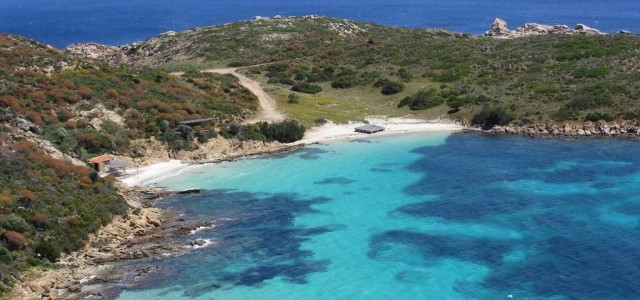Destinazioni - Comune
Porto Torres
Where
Porto Torres (Sassari)
Porto Torres (Sassarese: Posthudorra, Sardinian: Pòrtu Turre) is a comune and city in northern Sardinia, in the Province of Sassari.
It is situated on the north-west coast about 25 kilometres (16 mi) east of the Gorditanian promontory (Capo del Falcone), and on the spacious bay of the Gulf of Asinara.
History
In ancient times, Turris Libyssonis was one of the most considerable cities in Sardinia. It was probably of purely Roman origin, founded apparently by Julius Caesar, as it bore the title Colonia Julia. Pliny described it as a colony, the only on the island in his time, suggesting that there was previously no town on the spot, but merely a fort or castellum. It is noticed also by Ptolemy and in the Itineraries, but without any indication that it was a place of any importance.
The ancient remains still existing prove that it must have been a considerable town under the Roman Empire. According from the inscriptions on ancient milestones, the principal road through the island ran directly from Caralis (Cagliari) to Turris, a sufficient proof that the latter was a place much frequented. Indeed, two roads, which diverged at Othoca (modern Santa Giusta) connected Caralis to Turris, the more important keeping inland and the other following the west coast. It was also an episcopal see during the early part of the Middle Ages.
The existing port at Porto Torres, which is almost wholly artificial, is based in great part on Roman foundations; and there exist also the remains of a temple (which, as we learn from an inscription, was dedicated to Fortune, and restored in the reign of Philip), of thermae, of a basilica and an aqueduct, as well as a bridge over the adjoining small river, still called the Fiume Turritano. The ancient city continued to be inhabited till the 11th century, when the greater part of the population migrated to Sassari, about 15 kilometres (9 mi) inland, and situated on a hill. It was partly under Genoese hands before, in the early 15th century, it was conquered by the Aragonese. After the Spanish rule it was part of the Kingdom of Sardinia.
Torres was separated from the comune of Sassari in 1842. At the time the area which had been built around the basilica of San Gavino joined the fishermen's community near the port to form the new Porto Torres.
Main sights
The 11th-century, three-naved Basilica of San Gavino, which was built using only precious hardstones like marble, porphyry and granite, is the largest Romanesque church in Sardinia. Instead of the usual western facade and eastern apse, the cathedral sports two apses. The crypt holds several Roman sarcophagi.
Neolithic necropolis of Su Crocifissu Mannu and Li Lioni.
Nuraghe of la Camusina, Li Pedriazzi, Margone and Minciaredda.
Remains of the Roman bridge, the largest in Sardinia with its arches and a span of 160 to 170 metres (520 to 560 ft) on the Rio Mannu
Palazzo Re Barbaro
Catacombs of Tanca Borgona and piazzale Amsicora.
Aragonese Towers of the port and of Abbacurrente.
Transportation and industry
The port is connected by ferries with Genoa, Marseille, Toulon, Barcelona, Civitavecchia, Propriano, Expressway SS131/E25 to Sassari and Cagliari, and a national road to Santa Teresa Gallura (SS200). A railway operated by Trenitalia connects the town with Sassari, and the rest of the island.
Chemical industries support the modern economy of Porto Torres. Fiume Santo, a 1,040 MW power station owned by E.ON, is 5 to 10 kilometres (3 to 6 mi) west from the port, in the municipality of Sassari.
Plans related to industrial conversion are is in progress in Porto Torres, where seven research centres are developing the transformation from traditional fossil fuel related industry to an integrated production chain from vegetable oil using oleaginous seeds to bio-plastics.
Notes
References
This article incorporates text from a publication now in the public domain: Smith, William, ed. (1857). "Turris Libyssonis". Dictionary of Greek and Roman Geography 2. London: John Murray. p. 1241.
This article incorporates text from a publication now in the public domain: Chisholm, Hugh, ed. (1911). "Porto Torres". Encyclopædia Britannica 22 (11th ed.). Cambridge University Press. p. 127.


